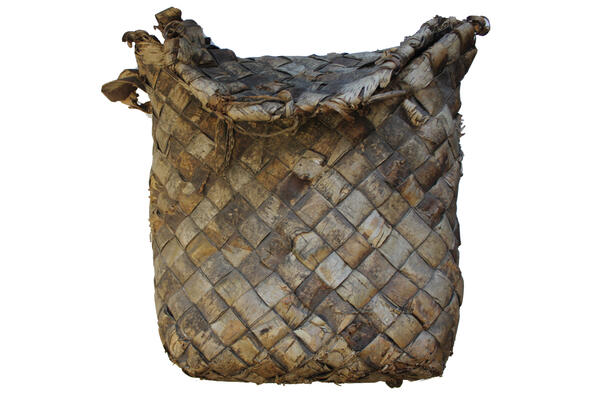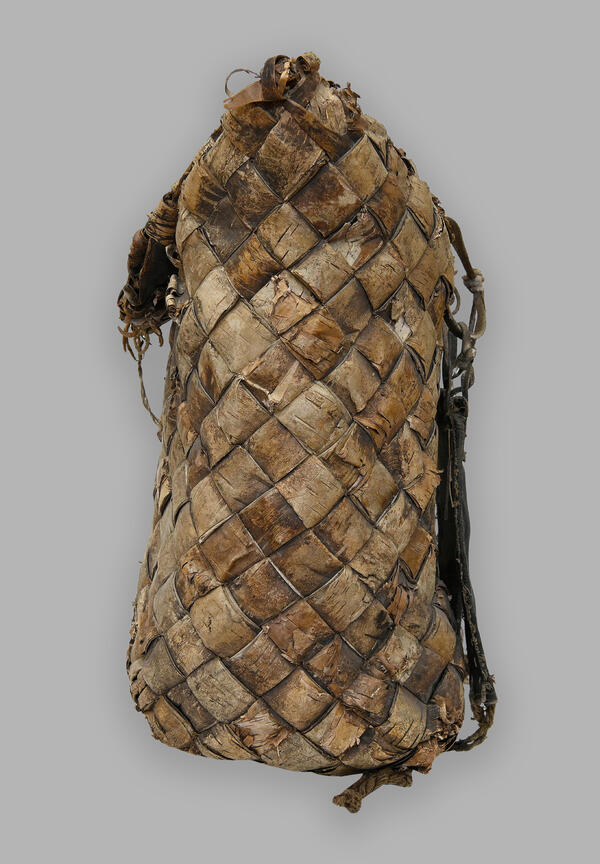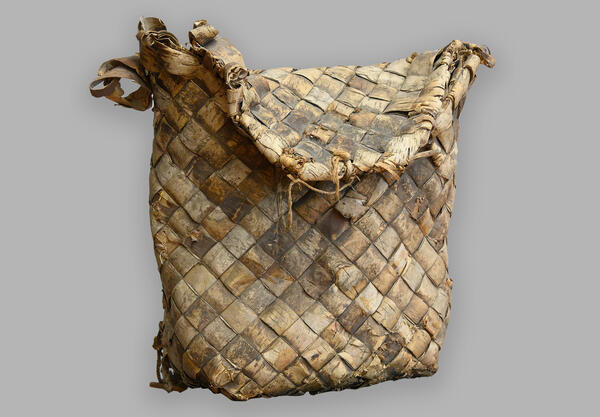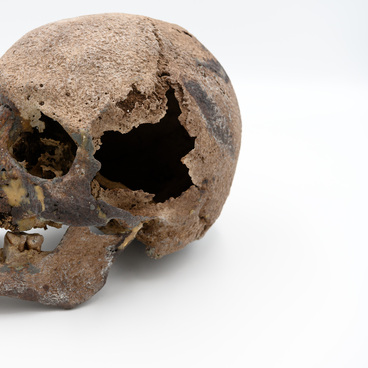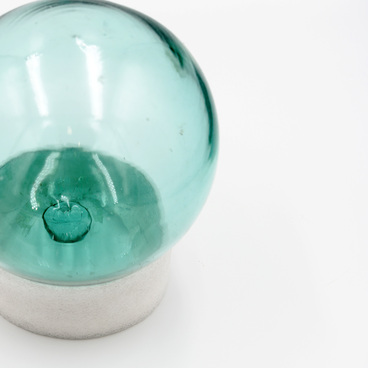The birch-bark backpack is presented in the section “Life of the Pomory” of the main exhibition of the Polyarny Museum of History and Local Lore. This bag was worn in the late 19th — early 20th century and later kept in the Pomory household of Tamara Timofeyevna Malanyushkina in the Belomorsky district.
The backpack had other names among the people: kuzovok, pester. The exhibit resembles an envelope-shaped box and is made of smooth strips of birch bark 3.8–4 cm wide, cut, most likely, with a very sharp knife. The back piece of the bag extends at the top to create a flap lid. The sides of the lid have rounded edges tapering downwards. At the front of the bag there is a rope for keeping the lid closed. Straps for carrying the bag on the back are attached to the back piece at the corners. Each corner piece is surrounded by a 2 cm-wide piece of rawhide leather. Two ropes are threaded through the cornerpieces at the top and bottom. Rectangular pieces of tarpaulin folded in half and stitched with large stitches with a rough thread are sewn to the ropes. The tarpaulin pads are intended to soften the pressure on the shoulders and prevent the ropes from cutting into the body when carrying heavy loads. The straps can be adjusted to fit snugly to the back so as not to cause unpleasant sensations in the shoulders, which can occur during long trips.
The backpack has a rather large capacity and is designed to allow its owner to carry bulky objects and heavy loads over long distances. With backpacks people went fishing, hunting, gathering mushrooms and berries, and collecting hay. They were taken on long journeys and stuffed with all things necessary for the trip and simple household items. When seeing this backpack in the exhibition, visitors — both children and adults — immediately recall the Russian folk tale “Masha and the Bear”. In particular the part where Masha deceived the Bear and returned home to her grandmother and grandfather, hiding in the box on the Bear’s back.
The backpack was presented to
the museum on September 12, 2002 by Tamara Malanyushkina.

